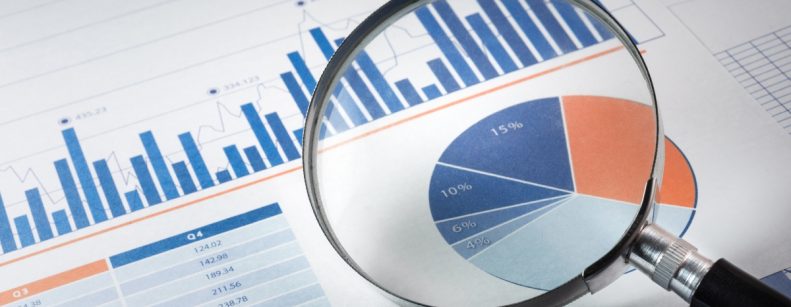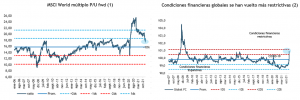
The markets are "trading more stable" or so it seems, although volatility has given up little (VIX is still near 30 points). By the way, there are things to rescue this week, such as the recovery of European banks that somehow alleviates fears that in addition to the energy crisis we are facing today, we could potentially have faced some kind of "financial crisis" regarding how the economic sanctions on Russia could have generated some "disruptions in the financial markets". Additionally, the fall in commodity prices in the face of growing optimism that a ceasefire agreement might be possible in Ukraine also generates some sense of relief.
The question that follows then is that if we have already seen the worst in terms of market adjustments?
At the beginning of the year, we argued that the markets could be facing some kind of "mean reversion" in terms of valuations and a "4Q18 style" adjustment, which was attributed to a "policy error" by the FED(https://www.fynsa.cl/newsletter/una-clasica-historia-de-reversion-a-la-media/).
Recently, we argued that focusing primarily on geopolitical risks could divert attention from what is really important in the markets today, that is... runaway inflation and the dilemma central banks face in terms of balancing downside risks to growth and upside risks to inflation exacerbated also by the geopolitical crisis in Ukraine. ( https://www.fynsa.cl/newsletter/que-los-arboles-no-le-impidan-ver-el-bosque/ )
Markets have their "codes", even if they do not have much fundamental support. For example, the definition of the bear market limit is limited to a market drop from highs to lows of 20%, anything below that is only understood in a context of "crisis" and recession. Therefore, it seems no coincidence that the fall of the Nasdaq and other markets such as Europe, for example, has been limited to 20% levels. However, at a more aggregate level, the S&P 500 and the MSCI World show a more limited fall of around 10%, which qualifies as a "classic correction".
From here several questions arise... could this be the end of the market correction? How will we know when it is over? And do we run the risk of a bear market? During the week Gavekal published a study that gives some clues and that seems to me to be accurate.
Looking back at the bear markets of the past decades: the Asian crisis, the dotcom crash, the mortgage crisis, the euro crisis, the Chinese stock market crash of 2015, the Christmas massacre of 2018, the Covid panic of 2020, it is possible to say that bear markets come to an end when one or more of the following events occur:
So, back to the original questions: Are we in a bear market? And could it be ending? On the face of it, it doesn't appear that any of the four conditions for a market bottom are close to being met.
In short, markets appear to remain vulnerable to further adjustments. If geopolitical tensions subside, concerns will refocus more strongly on inflationary risks and policy tightening. Global financial conditions have become tighter (see attached chart 2).
In any case, our base scenario does not consider recession risks, at least not in the US and with China applying a supportive policy, we believe that, except for Europe, recession risks are still limited today, therefore , we believe that conditions for a "bear market" are not in place . So any further adjustment should be interpreted as a buying opportunity in global equities.

Humberto Mora
Strategy and Investments